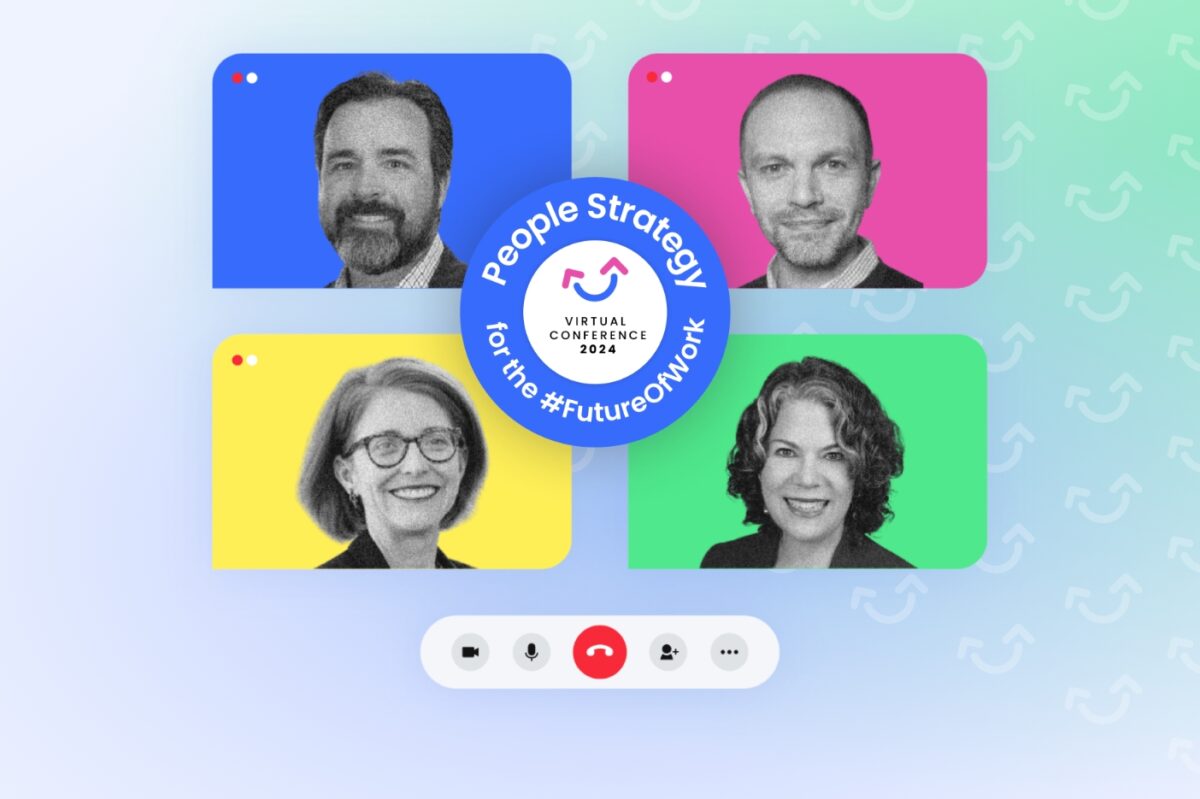A 2025 report by Workday found that 27% of employees across various industries are at high risk of burnout. Specifically, tech companies are increasingly at risk, with 23% now classified as high-burnout-risk organizations, an 8% increase from the previous year.
Burnout is increasingly becoming common in the fast-paced, competitive, tech-talent landscape. Feeling overworked and mentally exhausted is not a new phenomenon for tech professionals. What has elevated burnout to new heights is the compounding effects of the post-pandemic workplace settings. During this time, the tech workforce has often been pushed beyond its limits—from managing understaffed team projects to navigating mass layoffs in the IT industry.
Though burnout initially affects a person on a personal level, it is bound to affect a company’s bottom line in no time. From decreased productivity and performance to increased turnover rates and absenteeism, employee burnout can have a significant impact on businesses. Hence, nipping the problem in the bud is what companies should focus on. The blog aims to delve deep into the causes, warning signs, and preventive strategies to reduce tech burnout at work, particularly in the tech industry.
Understanding Tech Burnout and Its Causes

The term “burnout” is defined by the World Health Organization (WHO) as the result of prolonged stress in the workplace that has not been effectively managed. The consequences of employee burnout can be so grave that the World Health Organization has described it in the 11th Revision of the International Classification of Diseases (ICD-11). The WHO has recognized it as an official occupational phenomenon requiring immediate medical attention.
Burnout in the tech industry is more like an epidemic that can harm an employee’s productivity and well-being. It wouldn’t be wrong to argue that our fast-paced and digitally distracted lifestyles have intensified the issue. Employees find themselves constantly surrounded by laptops and smartphones that incessantly demand attention.
Extensive research over the years has consistently shown a strong connection between workplace burnout and a range of detrimental effects on both the organization and the individuals involved. These effects include increased absenteeism, decreased job satisfaction, reduced productivity, and more. Therefore, organizations must shift their focus from identifying who is experiencing burnout to understanding why it occurs.
It is crucial to recognize the role that job conditions play in contributing to this problem and assess whether there is a harmonious alignment between the worker and workplace policies. By doing so, organizations can address the root causes of burnout and work toward creating a healthier and more conducive work environment.
Also Read: How to Overcome Imposter Syndrome in the Workplace?
Causes of Workplace Burnout in the Tech Industry
A survey by Kronos outlined three key factors for workplace burnout:
- unfair compensation (41%),
- an excessive workload (32%),
- and too much overtime work (32%).
Other common factors were poor management, a negative work culture, and misalignment between employees’ personal goals and business objectives.
In addition to the factors identified by the Kronos survey, there are several other contributing elements to workplace burnout. These include:
- Lack of control and autonomy: When employees feel they have little control over their work or decision-making, they may experience feelings of helplessness and disengagement.
- Unrealistic expectations and deadlines: Employees who are constantly under pressure to meet unrealistic deadlines or expectations may feel overwhelmed and stressed, leading to burnout.
- Lack of clarity and direction: When employees are unsure of their roles, responsibilities, or expectations, they may experience confusion and frustration, contributing to burnout.
- Poor communication and feedback: Ineffective communication and a lack of constructive feedback can hinder employee development and motivation, leading to burnout.
- Work-life imbalance: Difficulty achieving a healthy balance between work and personal life can strain employees’ mental and physical well-being, increasing the risk of burnout.
By addressing these underlying factors, organizations can create a more supportive and sustainable work environment that minimizes the risk of workplace burnout.
Early Signs of Employee Burnout
The pervasive nature of burnout in the workplace can easily lead to the oversight of early warning signs. Consequently, managers must be equipped to recognize these indicators and take timely action to address burnout. Here are some key signs of employee burnout to be aware of:
- Decreased Productivity and Performance: A noticeable decline in an employee’s productivity or work output can signal burnout. This may manifest as missed deadlines, errors in work, or a general lack of focus and engagement.
- Increased Absenteeism and Tardiness: Frequent absences or tardiness can indicate that an employee is struggling to cope with the demands of their job. This may be due to physical exhaustion, emotional strain, or a combination of both.
- Neglect of Personal Appearance and Hygiene: A noticeable change in an employee’s personal appearance or grooming habits can be a sign of burnout. This may include disheveled clothing, unkempt hair, or a lack of attention to personal hygiene.
- Changes in Mood and Behavior: Burnout can significantly impact an employee’s emotional state. Signs may include irritability, mood swings, apathy, or a general lack of enthusiasm for work.
- Social Withdrawal and Isolation: Employees experiencing burnout may withdraw from social interactions with colleagues, friends, or family. They may isolate themselves and avoid social engagements.
- Physical Symptoms: Burnout can also manifest in physical symptoms such as chronic fatigue, headaches, muscle tension, or digestive issues. These symptoms may worsen over time if burnout remains unaddressed.
7 Ways to Avoid Burnout in the Workplace
Employee burnout is a prevalent issue in today’s demanding work environment, leading to stress, emotional exhaustion, and decreased productivity. However, burnout can be prevented through effective strategies and a supportive work environment. This blog section will explore seven practical ways to avoid burnout and foster a culture of well-being and sustainable performance.
-
Encourage Healthy Habits for Work-Life Balance
Recognize the essence of the age-old adage – “healthy body, healthy mind.” Encouraging employees to lead a life based on healthy habits can significantly reduce their likelihood of experiencing stress and depression.
Managers must encourage employees to celebrate unplugging. Whether going for a short walk or run or doing some sit-ups between work, starting small is key. Moreover, managers should educate their tech team on maintaining a balanced work-life schedule by encouraging them to return home on time and take scheduled time off.
-
Leverage Technology to Reduce Workload
Employers can leverage AI-powered tools to boost employee productivity and reduce workloads significantly. Project management software, for instance, can help tech employees put together a to-do list that evaluates and prioritizes tasks. Such tools also enable employees to make an effective plan of action to complete tasks within deadlines.
-
Foster Interaction and Participation Through Group Activities
Team building activities are crucial in creating an enjoyable, interactive experience that brings the team members closer together and can improve team dynamics. Post-pandemic, an increase in remote work settings has led to reduced personal interaction. This, in turn, has taken a toll on employees’ mental health.
To cope with the isolation that accompanies the remote work concept, individuals should prioritize social interaction. Employers can schedule regular virtual meetings with colleagues, form online communities or networking groups, and encourage employees to participate in virtual team-building activities.
-
Hire Remote Tech Professionals
Work-related fatigue can arise from an overwhelming accumulation of tasks, particularly when deadlines are rigid. Such a situation can negatively impact the team’s mental well-being and project outcomes. One way to mitigate this risk is to let employers augment their tech team by hiring offshore tech professionals. This strategy not only reduces the workload on their in-house team but also increases the chances of delivering successful projects.
-
Resources and Support to Cope with Stress
An alternative approach to mitigating work stress and burnout is to provide employees with the option of receiving counseling either online or through in-person sessions. These counseling sessions aim to help employees identify and modify their behaviors and thought processes to manage work-related stress effectively.
-
Offer Opportunities for Growth
Numerous studies have indicated that a significant cause of stress and burnout is the absence of career growth prospects. To address this issue, organizations should prioritize giving their employees ample opportunities for learning and advancement. They can implement training and development initiatives, mentorship programs, and well-defined promotion pathways.
-
Foster a Positive Work Environment
To promote a productive work environment, organizations must establish a positive atmosphere where employees feel appreciated, motivated, and supported. The following ways can help create this atmosphere:
- Open up avenues for clear and honest communication.
- Establish a comprehensive program aimed at acknowledging and expressing appreciation for an employee’s efforts through a robust system of rewards and recognition.
- Training on psychological safety should be administered to managers.
Also Read: Modern Performance Appraisal Types that Create a Winning Culture
Summing Up
Tech burnout has emerged as a significant challenge in the tech industry, posing threats to individual well-being and organizational productivity. Combating this issue calls for a comprehensive strategy that encompasses individual lifestyle changes, organizational support, and technological advancements. Organizations can foster a more sustainable work experience for tech employees by encouraging healthy habits, optimizing workloads with technology, and fostering team interaction.
Additionally, involving remote tech professionals, providing stress management resources, offering growth opportunities, and nurturing a positive work environment further contribute to a fulfilling workplace. Remember, preventing burnout is an ongoing process that demands unwavering attention and commitment from both individuals and organizations. By prioritizing employee well-being, we can foster a thriving tech industry that is both productive and fulfilling.
Frequently Asked Questions
1. How can employees prevent themselves from developing burnout?
Employees can prevent burnout by prioritizing work-life balance, practicing stress management techniques, setting realistic goals, establishing clear boundaries, taking breaks, seeking support from colleagues or supervisors, and actively addressing issues contributing to workplace stress.
2. How does employee burnout affect a company’s bottom line?
Employee burnout can have a significant negative impact on a company’s bottom line by decreasing productivity, increasing absenteeism, raising turnover rates, and lowering customer satisfaction.
3. What are the key causes of workplace burnout in the tech industry?
The tech industry’s fast-paced, demanding environment, characterized by long work hours, constant connectivity, and unrealistic expectations, is a breeding ground for burnout. Contributing factors include lack of control, unclear communication, and a work-life imbalance.



 Effective
Effective 




















 A strong company culture is crucial for attracting and retaining top talent, improving
A strong company culture is crucial for attracting and retaining top talent, improving 













